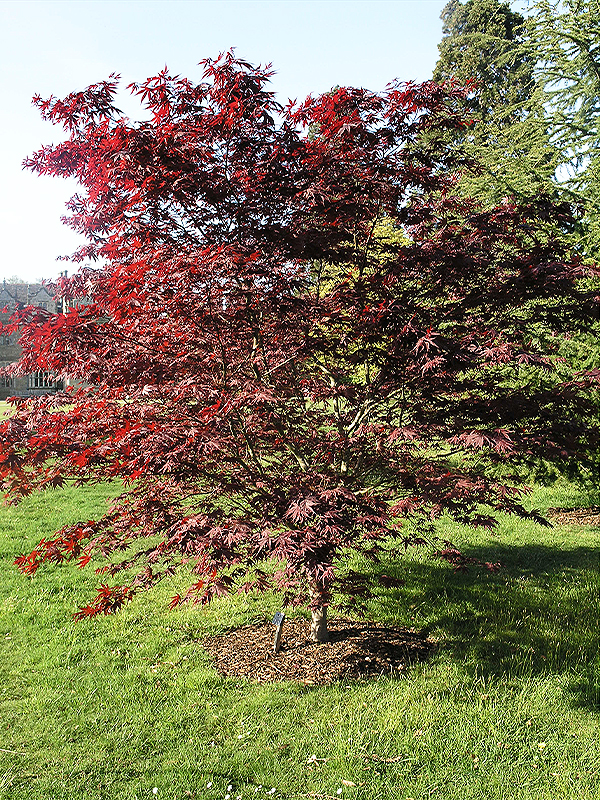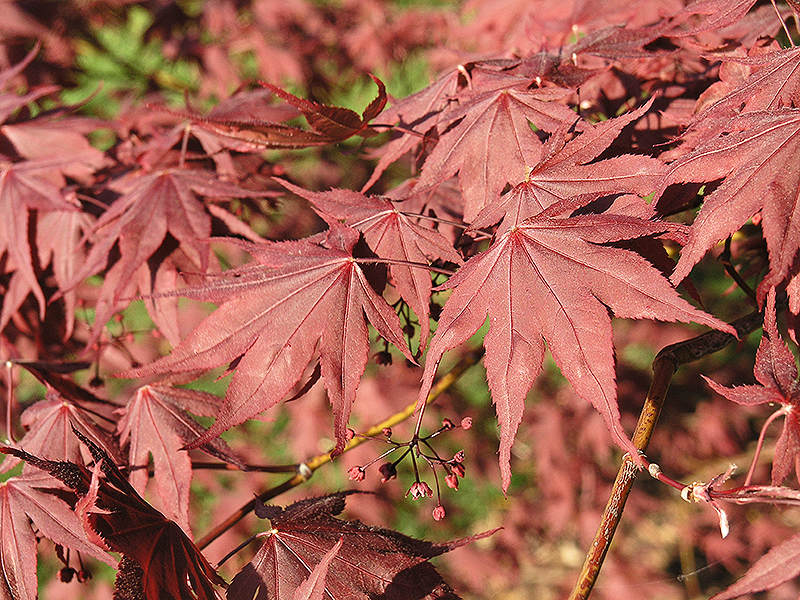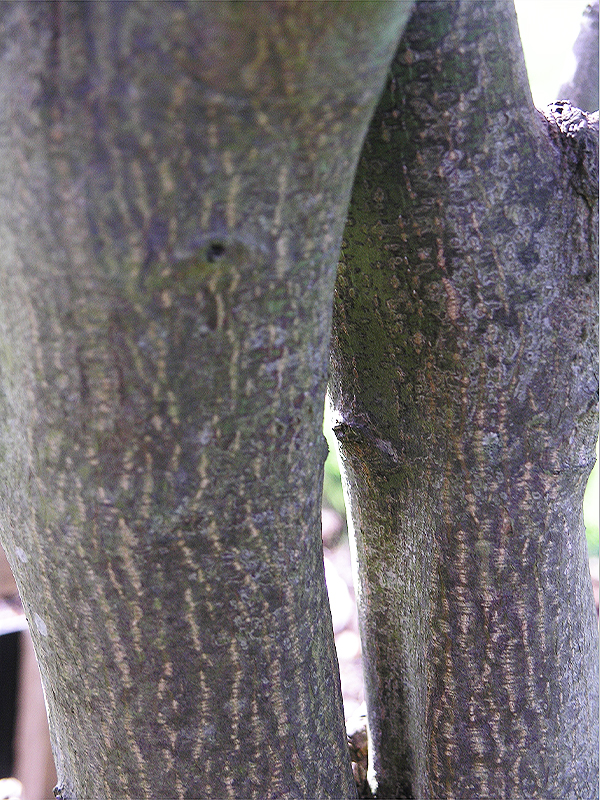| General Description | Has a more or less rounded form. The spread is comparatively equal in dimensions to the height. It's relatively fine texture gives it a delicate contrast to other landscape plants. |
| ID Characteristic | Palmate leaves with red petioles, beneath the canopy the leaves have traces of green by comparison to the rest of the leaves which are red. |
| Shape | Roughly rounded crown. |
| Propagation | Usually propagated from cuttings, virtually trouble-free rooting and amongst the most winter hardy cultivars. |
| Cultivation | Does best in full sun to partial shade. It is particular about soil conditions, with a preference for rich, neutral soils with a pH of 4 - 7.5. One should consider applying ample mulch around the root zone in the winter. |
| Pests | Anthracnose, verticillium wilt, aphids and leaf cutters. |
| Notable Specimens | The Garden of Fanshawe College, London, Ontario, Canada. |
| Habitat | Horticultural origin. |
| Bark/Stem Description | The trunk is smooth and grey, with whitish striations, the branches have an olive green colour. |
| Flower/Leaf Bud Description | Are small and green or red, often double terminal with high leaf scars that form a collar around the bud. |
| Leaf Description | Palmate, 10 cm long to 13 cm wide. Double serrate with five main lobes, two smaller near the petiole, and a simple venation pattern. |
| Flower Description | It features subtle clusters of red flowers that rise above the foliage in mid spring before the leaves emerge. Quite attractive when in bloom. |
| Fruit Description | Samaras or 'winged' seeds measuring 12-15 mm in length. They appear in April and ripen to red in the summer. |
| Colour Description | Wine-red or burgundy in spring, holding it's colour throughout the summer, bright vermillion in the autumn. |
| Texture Description | The leaves have a soft papery texture on the upper surface. The under-side has significantly raised venation and an even smoother feel. |



